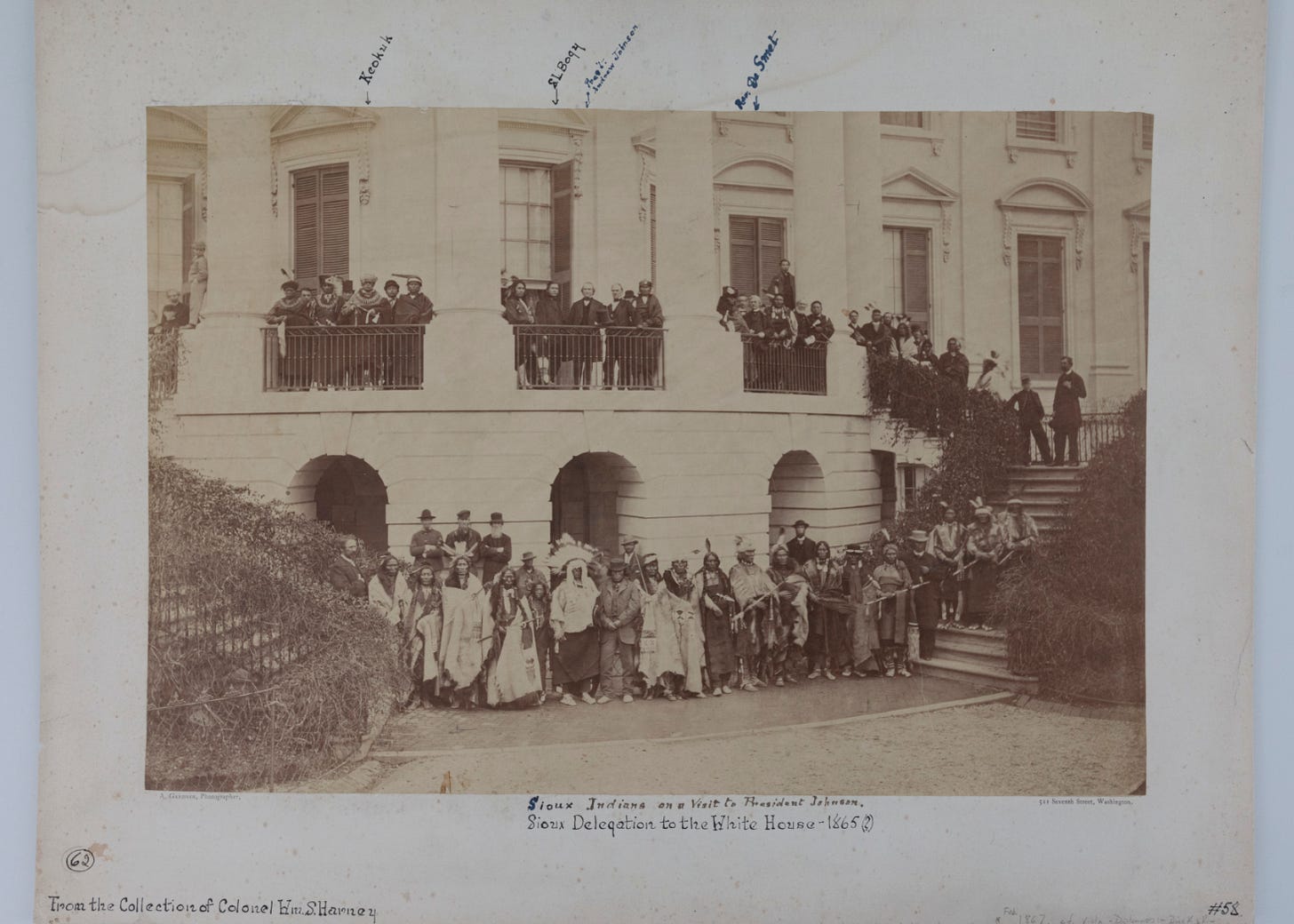American Indian Populations in Southeast Missouri and Southern Illinois in the 1800s - Part 1
Sioux goes there?

Terminology: When I was a kid, either the term "Indian" wasn't offensive, or I wasn't aware that it was offensive. At some point as I was growing up, the term either became offensive or I became aware of its offensiveness. "Native American" had become the generic term of choice for the peoples who populated North America before the arrival of European settlers. Now, it seems that "Native American" has become less favorable than "American Indian". My inner child prefers this term, anyway, but the preference isn't mine to have. That said, this article has been adapted to accommodate both my inner child and prevailing trends.
My maternal grandfather, Grandpa Bill, once said that his paternal grandmother was a "tall Sioux woman". Grandpa Bill had a fairly common last name, as did his father (Joe) and Joe's father (William) before him. Common last names complicate genealogical research, especially when they are paired with even more common first names.
To add to the complication of commonality, I am an adoptee. My parents were both in their late 30s when I was born. I am at least 13 years younger than all of my maternal first cousins. I knew Grandpa Bill (but only until I was seven, which is when he passed away), and I knew my paternal grandmother and step-grandfather. All of my other grandparents and great-grandparents had died before I was born.
Setting Up the Questions
All I know about the "tall Sioux woman" in my maternal family line is that she was born in Illinois, that she must have been in Southern Illinois in June of 1865—where and when Joe was born—and that she may have lived in Southeast Missouri at some point between 1893 and 1978, Grandpa Bill's lifetime. I'm inclined to believe that this relocation took place because Grandpa Bill lived his entire life, from birth to death, in Stoddard County, Missouri. Yet he knew his grandmother. Given the level of poverty that my mom grew up with, that Grandpa Bill still experienced even late in his life, Joe's parents moving from Southern Illinois to Southeast Missouri is more likely than Grandpa Bill traveling back and forth between the two regions.
I've accepted that I will probably never know Grandpa Bill's paternal grandmother's name, but that doesn't mean that I can't do research surrounding what little I do know about her. My approach to this is simple. Given that my great-grandfather, Joe, was born in 1865, my estimate is that his mother, my great-great-grandmother, was born somewhere between 1820 and 1850. She was likely born after Illinois had become a state in 1818,1 but may have been born further north than what is now Union County, where Joe was born. I suggest this possibility because, according to Ray Allen Billington and Martin Ridge, settlement in Illinois began in the north and slowly moved into the prairie, and that it was only "by the end of the 1840s the entire state was settled."2 Missouri's timeline is a bit slower than that of Illinois, and the thirty-year range I've estimated for my unnamed great-grandmother's birth means that—while it's more likely she was born after Missouri's statehood in August of 18213—there's a slim chance that the area where Grandpa Bill lived and died was still a part of the Missouri Territory when his grandmother was born.
With this background established, and my expectations sufficiently low, I want to know:
Was there a significant Sioux population in Southern Illinois or Southeast Missouri in the 1800s?
What other American Indian peoples had significant populations is these regions in that time period?
Keep reading with a 7-day free trial
Subscribe to Westward Spike to keep reading this post and get 7 days of free access to the full post archives.


